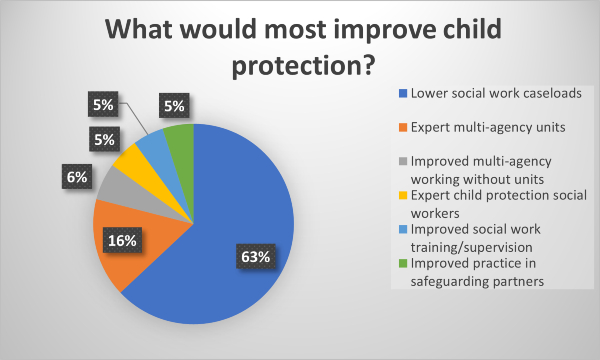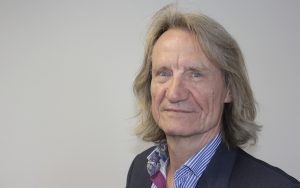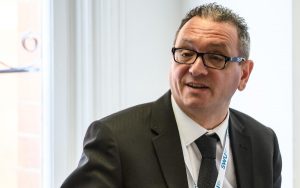
Community Care readers have overwhelmingly called for reduced caseloads as the best way to improve child protection in a snap poll.
Almost two-thirds (63%) of more than 1,100 readers who answered a simple multiple-choice question – “what would most improve child protection in England?” – opted for lower caseloads.
The poll was carried out after significant changes to child protection were recommended by the Independent Review of Children’s Social Care and the Child Safeguarding Practice Review Panel’s inquiry into the murders of Arthur Labinjo-Hughes and Star Hobson.
The former called for child protection work to be reserved for social workers assessed as expert in this area – which in future would be determined by passing a five-year early career framework. The latter recommended multi-agency specialist units to be set up to take responsibility for child protection in each area.

Both proposals proved much less popular than lower caseloads with readers, though the panel’s idea for expert units was the second choice option, with 16% support.
The care review’s proposal to ring-fence child protection work for expert social workers gained just 5%, a similar proportion to the other three options given: improving multi-agency working without specialist units, improving practice within partner agencies and improving social workers’ training and supervision.
The Department for Education is currently considering the care review and the panel’s recomendations and will respond fully later this year.
‘Need for specialist expertise’
On the eve of the panel’s report, former government safeguarding adviser Sir Alan Wood proposed creating specialist units as the best way of reducing child deaths.
In subsequently recommending the model to government, the panel echoed Wood in saying that child protection required specialist investigative expertise, while also arguing that multi-agency units would address longstanding information sharing issues that recurred in Arthur and Star’s cases.
Related reading
Caseloads bigger, more complex and harder to manage, say children’s social workers
‘Why the evidence does not support multi-agency child protection units’

Sir Alan Wood
Responding to our poll findings, Wood said it was “understandable” that reducing caseloads was the key preference given that in many areas they are “too high”.
“When you consider the reports and reviews on tragic child protection cases, the level of caseloads does not stand out as a consistent key feature requiring a key recommendation,” he said. “But a manageable caseload is important to social workers’ professional development and confidence, and should allow more time to work with the child and family – and that is a good thing.”
Multi-agency units ‘can tackle workload pressures’
Wood added that improved multi-agency activity was something backed by a range of professionals working in safeguarding, including those in education as well as health and the police. He said multi-agency child protection units should be designed to fit the characteristics of individual areas and could “meet directly the views expressed” by poll respondents.
Under his model, the units would be accountable to the three safeguarding partners in each area – the local authority, health and police – while the panel also recommended that partners set up a sub-group to direct multi-agency practice, including the work of the units.
“The key issue in driving and ensuring better multi-agency practice is leadership – at a strategic level the role of the three safeguarding partners provides the opportunity to sort the issues that bog down operational multi-agency working,” he said.
The poll findings come after several surveys have laid bare increasing pressures on practitioners in the wake of the pandemic. Social workers in children’s services told us their workloads had become bigger, more complex and harder to manage, in our annual caseloads survey, carried out in February.
Child protection ‘requires time with families’
Ray Jones, emeritus professor of social work at Kingston University and St George’s, University of London, said the view expressed by the majority of poll respondents was “very sensible”.
Irrespective of organisational structures, practitioners needed the time and the opportunity to find out what’s happening in order to do child protection, he argued.

Dr Ray Jones
“What we need is the time to find out what’s happening within families, the time to share information with others to build up the picture, the time to think hard, and the time to then provide the help and take the actions necessary,” Jones said. “That all gets squeezed if you don’t have adequate capacity.”
“What’s important is professionals from different agencies, working well together, knowing and trusting each other, sharing information and where appropriate planning together,” he said. “[That’s the case] whether you have to bring them together into [new] teams to do that, or whether they have the capacity given to them to do it anyway.”
Jones, who has long been sceptical of using structural reforms – such as setting up independent children’s trusts – to drive improvements, said the merits of specialist units remained “an issue for debate”.
Danger of structural change
“Structural change always takes time, there’s always a danger that it’s disruptive,” he said. “At the end of the day what we want is people working well together.”

John McGowan, Social Workers Union (photo: Simon Hadley)
John McGowan, the general secretary of the Social Workers Union, said the poll result largely mirrored the union’s perspective.
“Social workers require wellbeing support and adequate professional development, time for reflective supervision to work through complex child protection cases, manageable caseloads and a consistent approach to caseload allocation,” he said.
A spokesperson for the Child Safeguarding Practice Review Panel spokesperson said that because child protection is one of the most complex public services, “measures to improve the system cannot be undertaken in isolation from one another”.
“Our national review into the murders of Arthur Labinjo-Hughes and Star Hobson highlights a range of challenges in current child protection arrangements,” the spokesperson said. “These include long standing issues about the quality of multi-agency communication and information sharing, the need to ensure that practitioners have high quality and reflective supervision and that they have manageable workloads.”
The spokesperson added that bringing together key professionals into specialist units could enable a more joined up picture of what is happening to children. “Other recommendations would strengthen, both nationally and locally, multi-agency working and better support practitioners to undertake the very difficult and demanding work they do every day to protect children.”


 Family help: one local authority’s experience of the model
Family help: one local authority’s experience of the model  ‘I spent the first three months listening’: how supportive leadership can transform children’s services
‘I spent the first three months listening’: how supportive leadership can transform children’s services  How senior leaders in one authority maintain a culture of excellence
How senior leaders in one authority maintain a culture of excellence  How staff support ensures fantastic outcomes for children and families
How staff support ensures fantastic outcomes for children and families  Workforce Insights – showcasing a selection of the sector’s top recruiters
Workforce Insights – showcasing a selection of the sector’s top recruiters 

 Facebook
Facebook X
X LinkedIn
LinkedIn Instagram
Instagram
OMG, why can’t people hear us frontline Social Worker. Reducing caseloads enables social workers to do deep social work rather than surface tick box social work to meet unrealistic targets. We are working with complex traumatised children and families hence them being open to us.
I’m not saying multiagency working isn’t a good idea. However, we already work as a multi agency discipline but social care, health, police and education are stretched: due to lack of funding, staffing, retention and high levels of agency workers. This along the differing safeguarding threshold and responsibilities means that child get missed. This is the tragedy that shouldn’t happen.
The service, like children and families need stability and constancy. STOP: reflect on good practice and try to understand why the current multiagency practice don’t work. Give all practitioners including social workers the time and resources to think alongside our Children and families.
Politicians, researches and judges come and wear my shoes for a week, look through my eyes to meet the children we are all trying to protect. Speak to the families and children to ask want they want from us. Then I might put up with the challenge of churning and changing with no additional funding or resources.
Agreed
No one sets out to do a bad days work – but capacity issues in every sector hinders us all from fulfilling our professional role to the best of our abilities- fix this – and we might just see the changes we all welcome
Reviews don’t recommend staff recruitment strategies either but that doesn’t mean there isn’t a recruitment deficit too.By dint of their remit all reviews start with effectiveness of communication between agencies so it’s not a surprise recommendations follow on from that. There is a massive issue of competence about leadership in our profession but that that isn’t going to be addressed by creating yet more ‘strategic’ leaders from the same candidates pool. Let’s address the real daily practice issues, vacancy rates, pay and conditions, weak to non-existent supervision, the challenges all agencies are grappling with as a consequence of austerity politics and the like before what reads to me as a bid to head up any future National Child Protection Agency.
The real question is why didn’t the MacAlister review not ask this question? The What Works for Children’s Social Care were commissioned by the care review who carried out little more than an ‘opinion’ poll that other organisations have done better, more frequently and with much larger sample sizes e.g. Bath Spa University (2018) https://bit.ly/2qsTvcS, BASW (2022) https://bit.ly/3HUFonn, UNISON (2022) https://bit.ly/3HSzP8V who surveys involved sample sizes of 1953, 2000, and 3000 children’s social workers respectively. The What Works Centre did a particularly bad job focusing on a narrow set of questions – none of which asked about the impact of ‘workloads’ or ‘caseloads’. It managed to garner no more than 298 respondents (during an August holiday period) of which 17% said they didn’t work with children ( I assume they may have been managers) anyway. It is interesting to note that more was said in the ‘Case for Change’ that begged the question about ‘workloads’ and ‘burnout’. The former gets mentioned 5 times in the final report and the latter has disappeared from the narrative altogether in favour of ‘culture’ and ‘bureaucracy’ which tell only part of the story. Ok, the aims on each of all these survey’s were different but they cover similar ground in asking what prevents social workers spending more time with families and undertaking direct work.
Caseloads is the obvious one to any one working in the field knows but one that that MacAlister must have deliberately avoided. As to the wider research community. it either does not have the funding or is too scared to ask and, as for the care Review who have offered up ‘workload reduction tool’ that claims it reduced worklaods in teaching by 5%. The teaching unions point out that this still left teachers working over a 48 hour week and does not solve the probem.
What we (the profession, service users and the public) need – and have never had – is high quality quantitive and qualitative mixed methods research, informed by labour process theory and other related theoretical frameworks, into what do caseloads for social workers actually look like. How many children are social workers expected to manage? The government say the average caselaod is 16 cases per children’s social worker. Try telling that to the ASYE who repirted 36 cases in another survey run by this publication recently. Research questions should not just count numbers but examine work-life balance, TOIL accumulation, a 24 hour metadata capture as to what time laptops are logged in an logged out, number of interrupt, cancel or postpone leave, number of time supervision is interrupted, postponed and so on. In the meantime, hats off to Community Care for at least running this poll.
So the “social worker of the year” awards just around the corner. My LA have nominated two social workers both of whom have basically been nominated for being available outside of their contracted hours. This has to stop. Rewards for propping up a system that is collapsing in on itself? Until our profession say enough is enough this will continue and who will suffer? The vulnerable people we work with.
Working over and above their core responsibilities for the benefit of their “clients” surely!